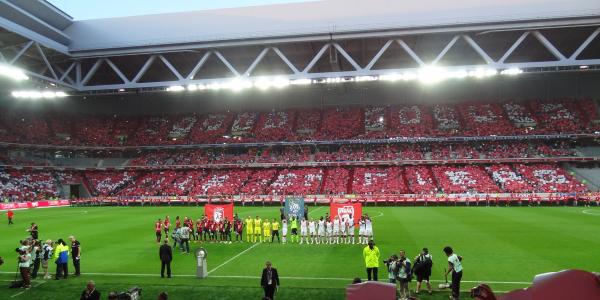
It is the end of December, which means that it is tradition to look back at the year we are about the finish. In our case, it means looking back at what happened in the fascinating world of football stadiums. Indeed fascinating, and there is so much to talk about that you’d better make yourself a cup of tea and sit back for 10 minutes.
The year 2012 came off the back of a prolific 2011 in terms of new stadium openings. While lacking a major tournament, instant classics such as Juventus Stadium, Türk Telekom Arena, and Arena Naţională all saw the light. On top of that, most of the venues that would get used during the Euros this year already celebrated their opening in 2011.
The exception was Warsaw’s contribution to the tournament, Stadion Narodowy w Warszawie. Plagued by delays and even deadly incidents, the arena officially opened in the end of January, but then it still took another month for it to be safe enough to host football.
One of our first articles of the year dealt with some good news for Valencia. We all remember that their new stadium project had fallen victim to the financial crisis and works on their half-finished stadium had halted in 2009, but suddenly there was a glimmer of hope that works could resume. In fact, the club ambitiously announced that this would surely happen in 2012. Well, we expect few people to be surprised that as of today no builders have been sighted yet at the construction site.
Whereas Valencia’s broken dreams are a perpetual agony for many Valencia fans, few Atlético fans will mind if their ambitious new stadium plans end a similar fate. Which they probably will. These plans were actually presented late 2011, and the club immediately sent some excavators to the site of the old Estadio La Peineta to do some show-demolishing, but none have returned since.
It was not all doom though in Spain, as construction on Athletic’s Estadio San Mamés Barria progressed relatively smoothly, and Real Madrid presented some amazing renderings for the redevelopment of Estadio Santiago Bernabéu.
Barcelona, on the other hand, postponed a possible reconstruction of Camp Nou, but might get spurred on again through jealousy of their rivals.
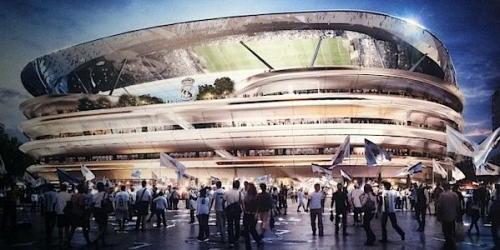
Still, 2012 is more a year of failed projects than a year of grand successes. Few amazing new renderings were presented, and few shovels broke ground for new projects.
Expectations were particularly high for the Italian Serie A. Off the back of the success of Juventus’ new arena, which had been sold out over almost the entire 2011-12 season, it was hoped that more clubs and cities would finally get the courage to start the big overhaul the hopelessly dilapidated Italian stadiums need so much.
In fact, many clubs announced their intention to do a Juventus and move to a new and modern arena. Club presidents of – just to name of few – Napoli, Catania, Palermo, Brescia, and Lazio all stated that a new stadium was pretty much a done deal if it were up to them, but they just needed the signatures of the local legislature. None came and none are expected soon in these cases.
Nobody really knows what is going on with Fiorentina’s stadium plans.
Udinese, as always overperforming, was the only Serie A club to get stuff done and proudly presented plans for the redevelopment of Stadio Friuli. Planning permission is in the bag, but they still need to find the money.
The two highest-profile projects were arguably those of Inter and AS Roma. Inter even sold a stake in the club to finance a new stadium, but planning still seems to be in the early stages. Roma appeared closer to a breakthrough and seemed to be closing in on a site, but while club directors keep stressing that an official announcement is imminent, it has been much talk but little walk thus far.
Then there is Cagliari, a familiar story to those who follow this site. Fed up with a lack of progress on the Karalis Arena and the poor state of Stadio Sant’Elia, club president Cellino first send the team to play in Trieste, and then decided to build a makeshift stadium in a nearby municipality.
Stadio Is Arenas was hastily build over the summer, but failed to get safety clearance for the start of the season and the first matches were therefore played behind closed doors. This caused Cellino to throw a massive tantrum.
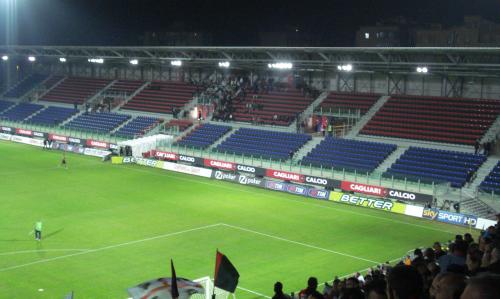
While the state of English stadiums is almost the exact opposite of that in Italy, there are still a good few Premier League aiming for improvement. Unfortunately, little concrete progress was made in 2012.
Chelsea were most in the news with their bid for the Battersea Power Station site, but it got rejected and they are now back looking at other sites in West-London. That is a shame, because the renderings they later presented looked stunning.
Spurs have kept focusing on building a new stadium right next to White Hart Lane, but only baby steps were made this year. West Ham, in the meantime, have put all their eggs in the basket of moving to the London Olympic Stadium and received good news earlier this month when they got selected preferred bidder. There is still a long way to go though.
The best news from London came arguably from Fulham, who got permission to build a new stand in place of the Riverside Stand.
Up north, Liverpool started the year ever in doubt between redeveloping Anfield or building a new stadium at nearby Stanley Park. They then suddenly got interested in some renderings from 2003 they found in some dusty drawer, but as the year went by it became increasingly clear that redeveloping Anfield was their preferred option. The official announcement was made in November.
Liverpool still faces a struggle to get planning permission though, something that Swansea already has overcome. Works to expand the Liberty Stadium with an extra 11,000 seats will likely start next summer.
Prospects look good as well for Bristol Rovers’ new stadium plans, with all that remains is for Sainsburys to get permission to build a supermaket on the site of the Memorial Stadium. It is still all misery for rivals Bristol City though.
More heartbreak in Scotland, where Aberdeen saw their new stadium plans, which seemed all but confirmed, suddenly go up in smoke.
The British highlight of the year must therefore be sought down the leagues in Rotherham, where the local football club opened the splendid New York Stadium. Brighton & Hove Albion, in the meantime, did their best to further improve the already attractive The Amex.
Newcastle United also made some headlines during the year when owner Mike Ashley decided to rename St James’ Park to Sports Direct Arena, opening the way for a permanent name sponsor. Fortunately, when that name sponsor came in the form of Wonga, they were smart enough to make some friends and name the stadium back to its original name.
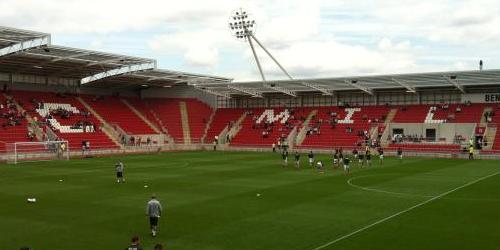
There has been very little going on in the German Bundesliga this year as fans are already used to sponsor names and most clubs already play at satisfactory arenas. Freiburg and Greuther Fürth are the exceptions, though the latter decided to shelve their plans as they were pretty pleased with the redevelopment works they had performed on the Trolli Arena over the summer.
Some new stadiums were opened though, but all in the lower leagues with Kickers Offenbach and Rot-Weiss Essen the most notable cases.
Few excitement in Holland either, where smaller clubs VVV Venlo and Heracles Almelo struggled to close the deal for a new stadium, and De Graafschap saw their plans rejected by the local council.
That is, until Feyenoord announced to want to demolish De Kuip, which had just celebrated its 75th birthday, and replace the iconic stadium with a new and more modern one. Fans were not pleased and massively backed an alternative proposal for adding a third tier to the existing stadium. In vain, probably.
Europe’s big league with the most stadium activity must have been France, which makes sense of course, because they will have to deliver at least 10 suitable venues for the Euro 2016 tournament. But man, is it proving a challenge to get to that number.
Nancy had already passed on the option to stage Euro matches before the year had begun, and Lens have struggled all year to get their project to renovate Stade Bollaert-Delelis off the ground. Its status as a playing venue is still not clear. Toulouse presented ambitious renovation plans early in the year, but later had to admit that a small renovation of Stadium de Toulouse is all that is financially possible.
Bordeaux’s Futur Stade was another problem child, but the project now finally seems to be going in the right direction. Olympique Lyonnais have also finally obtained planning permission for their Grande Stade and have started some early groundwork on the site.
Paris Saint-Germain’s new rich owners also fancied something newer and shinier than Parc des Princes, which would have ruled the stadium out for Euro 2016, but in the end were convinced to postpone any major plans until after the tournament.
That said, the redevelopment works on Marseille’s Stade Vélodrome progressed nicely, Saint-Etienne already opened one new stand of Stade Geoffroy-Guichard, and Nice’s new stadium has been growing quickly. Nice have also already announced a name sponsor for their new stadium, with Allianz adding another naming rights deal to their portfolio. As Allianz Arena and Allianz Stadium had already been taken, they ended up with Allianz Riviera.
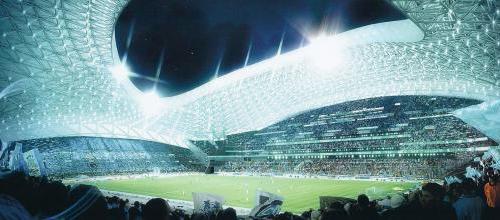
France furthermore provided one of the real highlights of the year in the opening of the Grand Stade Lille Métropole. Finally a proper home for Lille OSC, and it might also bring the occasional pop megastar to the north of France.
There are many similarities between Lille’s Grand Stade and Sweden’s new national stadium, the Friends Arena. They are both multifunctional, have retractable roofs, consist of three tiers (with a fashionable small middle tier), and have capacities of around 50,000. The Friends Arena got off to a fantastic start in November when Zlatan Ibrahimovic decided to use the occasion to show off his skills.
Unfortunately, the opening of the Friends Arena also meant the end of one of Europe’s classic old grounds, Råsunda Fotbollstadion. The host of the 1954 World Cup final will get demolished in the upcoming months.
Just like France, Russia also feels the pressure of delivering sufficient venues for a major tournament, but unlike the French do not seem to be too bothered by that. With much time to spare works are already well under way on five venues. Nothing finished yet in 2012, but the organising committee did confirm the definite list of twelve host cities and that a redeveloped Luzhniki Stadium will host the final.
Brazil is in a similar situation, but with four years less to get the job done. In good tradition panicky reports have already warned that Brazil will never get all venues and infrastructure finished in time, but we all know by now that everything will be ready come 2014.
In fact, two redeveloped venues already opened this month: first the Arena Castelão in Fortaleza and a week later Mineirão in Belo Horizonte. Then there is the Grêmio Arena, which was the first to open this month, but while it complies with all FIFA standards, is not even a playing venue at the World Cup.
But despite these early successes, 2013 will become the real year of Brazilian football stadiums.
It was relatively quiet in the rest of Latin America this year. Argentine football stadiums could definitely need an upgrade, but it was only Unión de Santa Fe that presented something of a concrete plan. It however remains to be seen whether they can find the money now that they are on the brink of relegation.
Money will also be an issue for San Lorenzo and their dream return to their home barrio Boedo, and we really don’t know how serious to take the announcement of Boca Juniors to build a brand new stadium next to La Bombonera.
In neighbouring Chile, La “U” seems to be a little closer to their desired new stadium, but nobody would be surprised if they end up in the same archive as previous versions.
This was also what the San Jose Earthquakes feared when local residents kept protesting the construction of their new stadium, but all ended well for them when they received the definite approval in February. The club then made something nice of the groundbreaking by inviting 6,000 people over to turn it into a world record.
It has been a prolific year for the Major League Soccer in any case as one new stadium and another redeveloped one opened: first Houston’s BBVA Compass Stadium and then Montreal’s Stade Saputo.
The MLS hopes to add another New York stadium to that list, and while initially investigating a rather spectacular location on the river Hudson, seemed to have instead gone full in on a location in the Queens borough.
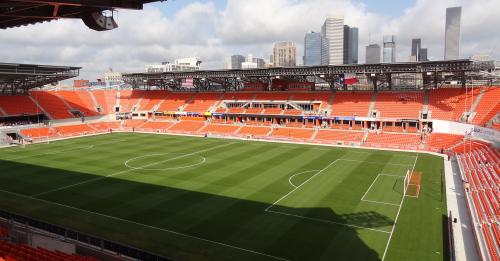
The move from natural grass to artificial turf failed to gain momentum during 2012 with San Siro contemplating but ultimately rejecting an artificial pitch, and Mexican Chivas moving back from artificial to natural.
The 2012 Champions League final got played in Munich, whereas the Europa League final was hosted by the Arena Naţională in Bucharest. Kiev’s NSC Olimpiyskiy hosted the football highlight of the year in the Euro 2012 final, whereas the African version was held in Gabon and Equatorial Guinea.
The French Ligue 1 tried to expand their brand by having the Super Cup played at New York’s Red Bull Arena, but while previous overseas ventures had proved highly successful, few New Yorkers got excited by the fixture between Lyonnais and Montpellier.
The European Super Cup, traditionally played at Stade Louis II in Monaco, will also go on the road with UEFA announcing that the 2014 edition will be played at Cardiff City Stadium and that the European Cup winners will have to travel to Tblisi the year after.
Whereas this announcement went by almost unnoticed, UEFA’s idea that the 2020 tournament will get played spread out over multiple countries created much more press, and a lot of controversy.
Despite the struggling economies on the European continent, attendances held up well. In fact, the German Bundesliga clubs welcomed record crowds at their stadiums. The other European leagues held up well with more or less similar numbers as the season before, though things look gloomy for the Italian Serie A, where attendances once more plummeted.
The attendance picture was mixed in the rest of the world, with record numbers in the MLS, a recovering Japan, China that is about to equal the averages of Ligue 1, and a serious decline in the Brazilian Série A.
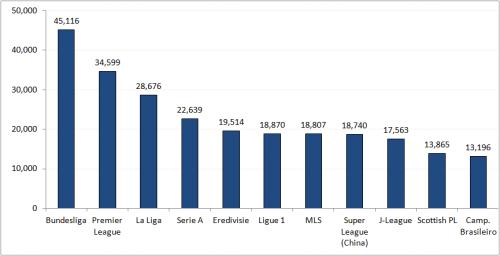
Still, fans have become increasingly uneasy with rising ticket prices, excessive security theatre, and the obligation to sit down during a match. German fans have been particularly vocal in the last few months, fearing that they might lose their particular football culture, but also fans of various Belgian clubs have staged protests against increasing ticket prices.
In England, in the meantime, momentum seems to be growing for the reintroduction of standing areas, something that is already increasingly happening in the Netherlands, though still at a small scale.
Overall, 2012 was neither a spectacular nor a dull year in terms of stadiums, though one cannot help but feel that the upcoming years will be a lot more austere than the previous ones. New stadiums will continue to get built, but mostly limited to countries that need to because they are organising a major tournament, and future versions of this annual review may well be a lot shorter.
(Photo credits: Grand Stade Lille – Wiki user Liondartois, Stadio Is Arenas – Wiki user DerfelDiCadarn87, New York Stadium – Rotherhamlad1983, BBVA Compass Stadium – Houtexusa)